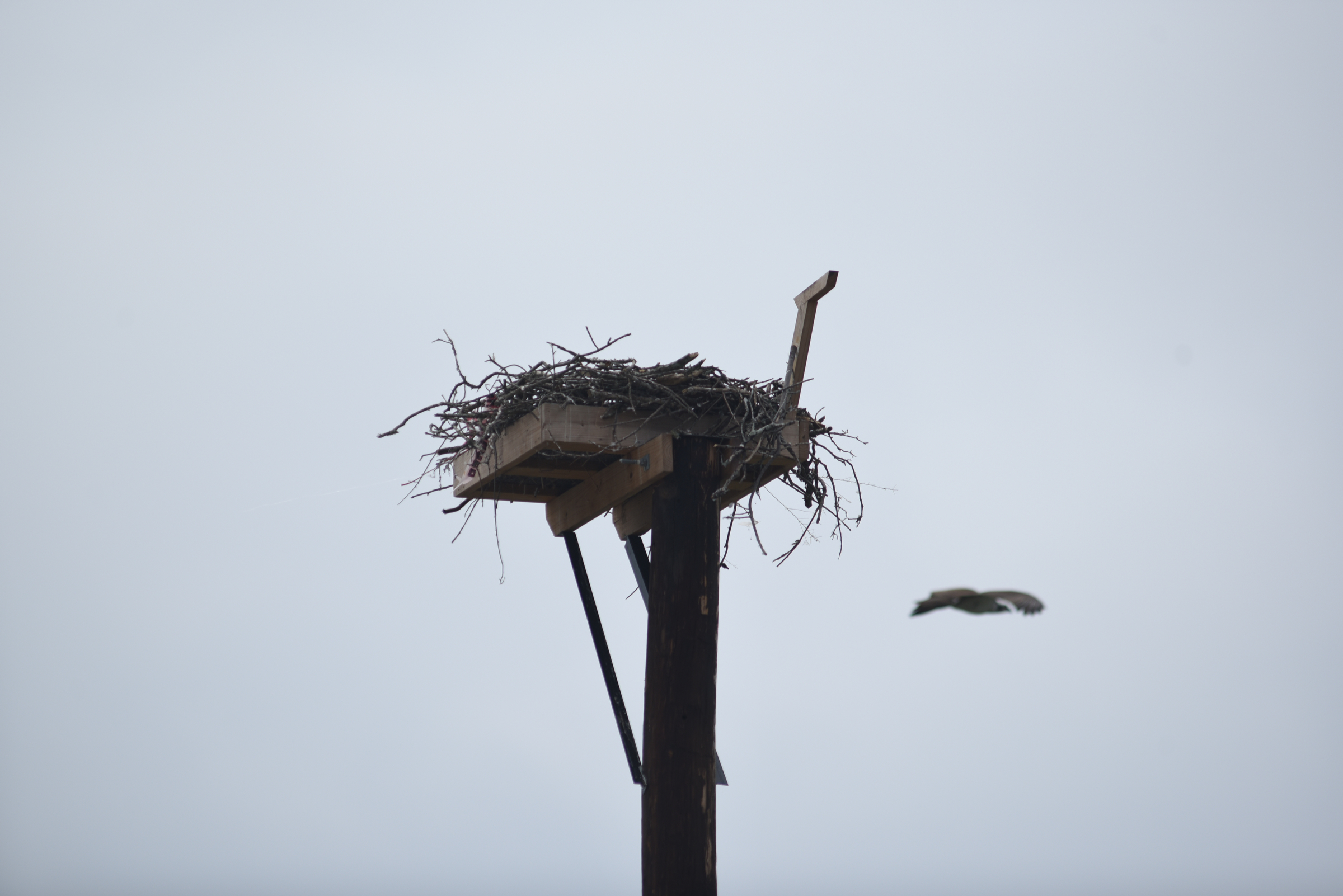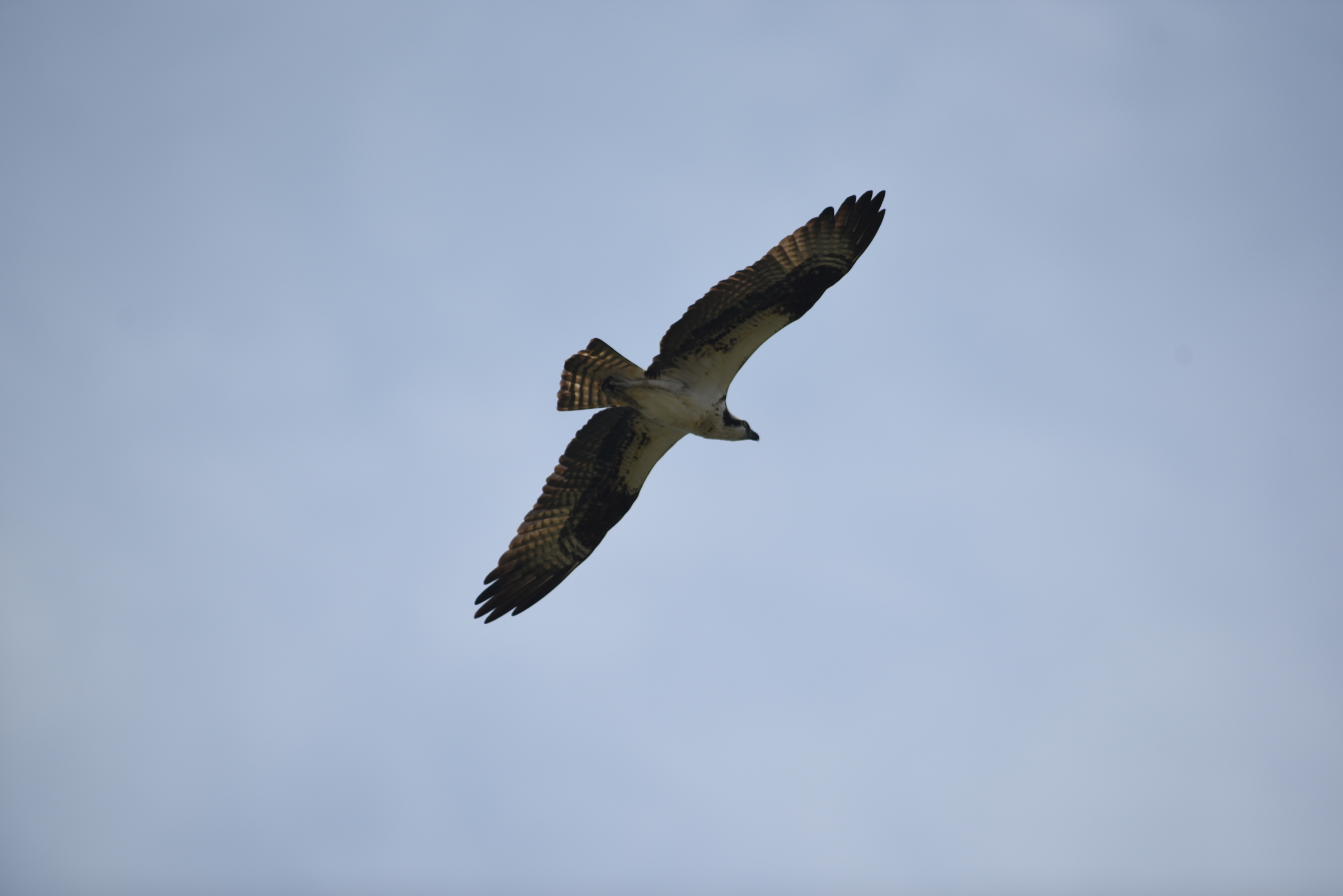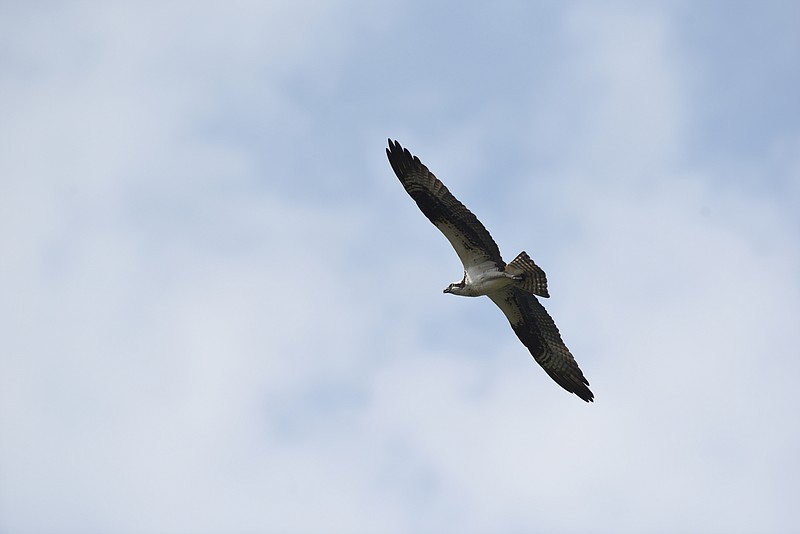Ospreys nesting on the steel trusses of the old U.S. Highway 41 bridge over the Tennessee River were displaced when their longtime home was torn down and a smooth new bridge opened earlier this year.
So state officials decided one more little project was still needed.
 Staff Photo by John Rawlston An osprey flies past a newly-constructed nest platform Tuesday, July 14, 2015, next the the new Highway 41 bridge over the Tennessee River at Haletown, Tenn. An osprey pair had been trying to build a nest in a crane being used in the demolition of the old bridge, so workers built two platforms nearby, one of which was put into immediate use by the nesting pair.
Staff Photo by John Rawlston An osprey flies past a newly-constructed nest platform Tuesday, July 14, 2015, next the the new Highway 41 bridge over the Tennessee River at Haletown, Tenn. An osprey pair had been trying to build a nest in a crane being used in the demolition of the old bridge, so workers built two platforms nearby, one of which was put into immediate use by the nesting pair.What is an osprey?
According to the Tennessee Wildlife Resources Agency, the osprey was a rare breeder in Tennessee before the development of large reservoirs in the 1900s. The bird lives on fish and has a slender body, long wings and long legs with dark brown above, white below, and with a white head that has a prominent dark stripe through the eye. The osprey spends the day perched near water and can be seen gliding 30 to 100 feet over the water to hunt. When a fish is sighted, it hovers, before diving with feet outstretched and eyes sighting straight along its talons. It was listed as a federally endangered species in 1975 but after the pesticide DDT was banned, populations rebounded and the bird was taken off the endangered list in 2000.
 Staff Photo by John Rawlston An osprey flies near a newly-constructed nest platform Tuesday, July 14, 2015, next the the new Highway 41 bridge over the Tennessee River at Haletown, Tenn. An osprey pair had been trying to build a nest in a crane being used in the demolition of the old bridge, so workers built two platforms nearby, one of which was put into immediate use by the nesting pair.
Staff Photo by John Rawlston An osprey flies near a newly-constructed nest platform Tuesday, July 14, 2015, next the the new Highway 41 bridge over the Tennessee River at Haletown, Tenn. An osprey pair had been trying to build a nest in a crane being used in the demolition of the old bridge, so workers built two platforms nearby, one of which was put into immediate use by the nesting pair."Osprey Acres" - a pair of platforms installed atop two 50-foot poles - is the brainstorm of Ray Rucker, the Tennessee Department of Transportation's Region 2 director.
"We had to tear the old bridge down and people got upset," Rucker said. "'Hey, you're going to tear down the osprey nest. We like ospreys,'" Rucker said.
Rucker said the fish-eating raptors were getting crowded out by the project and had started eyeing the boom structure of the construction cranes for their nest.
"One day we were out there and the ospreys were trying to build a nests on top of the cranes," he said. "It didn't matter where that crane was. When it stopped, they were there. They were bringing big old sticks up there."
As Rucker headed home to Chattanooga that day he noticed an electric company power pole that had an osprey nest platform on top. Then TDOT Director of Operations Ken Flynn had to answer some emails about the ospreys' housing situation, Rucker said.
There was an extra pole at one of TDOT's storage lots. The Sequachee Valley Electric Cooperative offered to drill a hole for the pole, and a TDOT crew member built the platform, he said.
"It wasn't long after we put the pole in [that] two or three families of ospreys were fighting over it," Rucker said.
Because the nest site was popular, officials thought it would be a good idea to install another one a few hundred feet away.
But so far, the second pole hasn't drawn a resident and Rucker suspects it might be too close to the first one.
"We may have to go on to the other side of the bridge and put up another one," he said.
"It's not a big deal," he said of the project. "The people over in that area, they like their ospreys. We need to be a partner with them and provide something for the environment."
TDOT spokeswoman Jennifer Flynn, Ken Flynn's wife, said the osprey platforms - which she admits are "kind of weird" for a TDOT project - were designed with help from the Tennessee Wildlife Resources Agency to make them at least as attractive as the cranes.
"They really have taken to using the platforms," she said. "We designed them the way the ospreys like them."
Contact staff writer Ben Benton at bbenton@timesfreepress.com or twitter.com/BenBenton or www.facebook.com/ben.benton1 or 423-757-6569.
